Many people might have heard the following phrases, “Be thou salt” or “This world’s light and salt,” which means to be an important person in the world. Being one of the necessities at the kitchen table, salt is not only used to emphasize or act as a symbol of importance, but it is also included in the process of nearly everything in the world; it is inseparable from human lives. Therefore, in the June issue, the Sungkyun Times (SKT) dives into the history of salt, its practical usage in our daily lives, and art made out of salt.
Salt: The White Gold
Humans Meet Salt
Sodium Chloride (NaCl), or as it is otherwise known as, salt, is a crystal, white, mineral compound, which is found in nature, that people use to season or preserve food. Furthermore, the human body itself has about 0.9% of saline content to ensure an equilibrium in osmolality, the salt level of the body, and to maintain the normal functions of the organs. This means that salt is essential for the survival of human beings. The earliest usage of salt by humans dates back to 6000 B.C. Early mankind, in the primitive era, were usually nomads had a diet that consisted of milk, meat, and fish, which allowed them to obtain enough salt naturally. Through settlement and the development of agriculture, however, their diet changed; it composed of more grains and vegetables. This slowly strayed them away from eating salt naturally and caused them to search for other forms of salt in their diets.
The first extraction of salt is presumed to have started during the Stone Age, dating back to around 6050 B.C. to 5500 B.C. in Eastern Europe. Traces of the earliest salt extraction from salt water were found at the Poiana Slatinei site located in Romania. People at that time used a vase called a “briquetage” to evaporate water from salt water and extract salt. The initial salt mine was established in Duzdagi, Azerbaijan about 4,500 years ago. In the
case of Korea, the exact time of when people started to use salt for the first time is unknown. There is, however, a record in Samkukji, Romance of the Three Kingdoms, that salt was collected by early Koreans near the shore of Goguryeo, one of the ancient kingdoms of Korea during the period of the Three Kingdoms from 57 B.C. to 668 A.D.
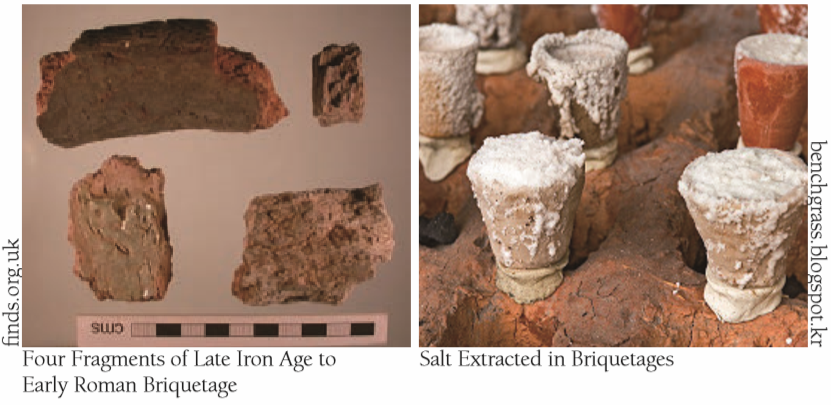
Today, the type of salt can be divided into two according to the source of the salt water: halite which is a rock salt, or sea water. Refined salt is extracted from halite embedded in the ground by digging it up directly or by injecting water and then melting or boiling the salt water to collect salt. Bay salt, which is another type of salt obtained through a different method, is extracted by trapping sea water on the seashore and evaporating it by sunlight.
Civilization and Salt
Salt has been used as an important offering for religious rituals in ancient countries and as a symbol of contract and loyalty due to its unchanging physical property. Ezra 4:14 states, for example, “Now because we eat the salt of the palace,” as a way to express loyalty to the King. In addition, as a daily necessity, salt was also used as a form of currency in the past; in Rome, it was treated as a form of “salary” for government officials and soldiers. As nomads and farmers started to gather around where halite, seashores, and salt lakes were located to exchange salt, cities were developed, becoming the mecca of trade. Venice, Italy, for instance, was just a small fishing village until around the 6th to 7th century. It, however, started to prosper and became wealthier for its position as a center of trade from about the 10th century when people started to sell salt collected from the nearest seashore to Europe. Even a salt trade route between countries emerged in order to get salt such as Via Salaria of the Roman Empire. Since salt was a symbol of wealth and power throughout the world prior to the 18th century, there were numerous conflicts because of salt as well. One of the representative cases is the 1877 El Paso Salt War, where small tribes of Mexicans fought against the Texas Rangers because of salt.

Impact of Salt in Human Life
Various Usages for Salt
The first thing to come to the minds of most people when they hear the word “salt,” would be its usage for food. It is true that salt is one of the oldest “condiments” and seems to be used in all sorts of food, but surprisingly food accounts for only 6% of the entire usage of salt. In fact, about 68% of all salt is used as ingredients for the chemical industry. There are more than 14,000 different methods for the use of salt in the process of producing plastic, paper, glass, polyester, rubber, and many other things.
There are still many more interesting ways to use salt besides cooking and manufacturing; salt is also used in the beauty industry, and it is possible to try out some of them even at home. Salt not only results in an excellent bleaching effect, but also keeps the balance of skin, moisturizes and protects the skin, removes dead skin, and helps with anti-aging. Alexis Rose, the founder of an American beauty brand LILFOX, stated, “It is possible to get more than 20 essential minerals that are made naturally in the body but are lost throughout the day,” through salt.
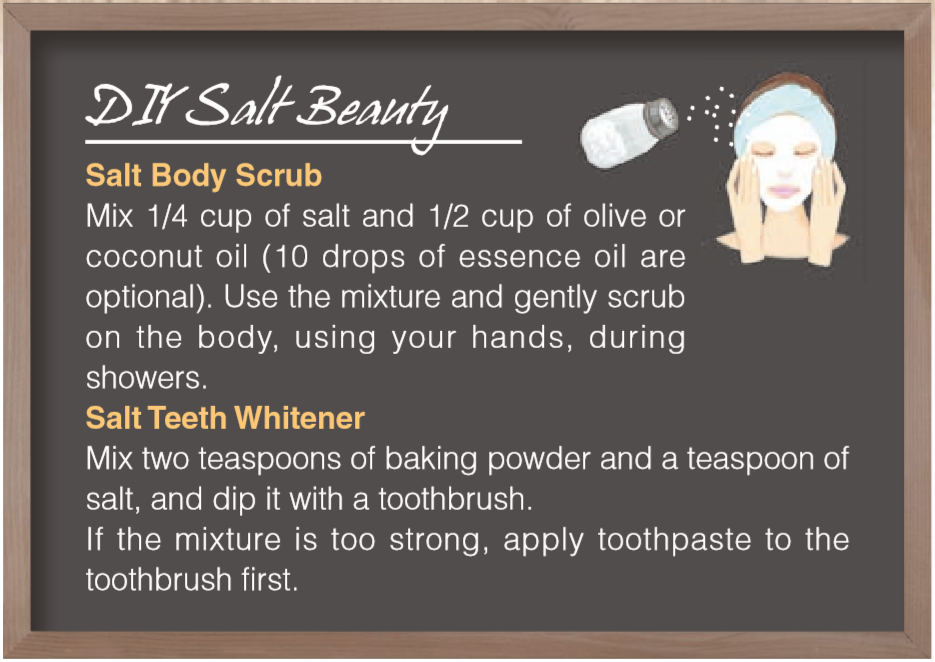
Salt Found in Language
Lots of words have salt as their etymologies. Words like “salary,” compensation for service, derived from the Latin word salarium as salt was used for paying soldiers. Since early Romans seasoned green leaves and vegetables using salt, the word “salad” also derived from the Latin word Sal, which developed into the ancient French word salade, and finally became the word “salad” that is used today in English. It is also notable to find salt in the names of regions which were made and developed by the help of salt. Hallstatt, in Germany, is one of them; hal means salt in German and sat means settlement in ancient German. Regions that end with wich such as Droitwich and Nantwich of England also derived from the Latin word vicus which is associated with salt.
Salt can be seen in proverbs of countries around the world as well. China, for example, has the proverb, “Blandness will be endless without salt,” which means that one should put a lot of effort into finishing something well. It is an expression alluding to the importance of sprinkling salt into food as a final step. A Polish proverb, “We have eaten a jar of salt together,” means a longlasting friendship; it means that people had been sharing bread and salt as friends for a time long enough to empty a jar of salt.
Salt in Culture
Salt as an Art
#1 Halite Sculptures in Wieliczka Salt Mine
As the quantity of salt being extracted from salt mines has decreased since 17th century, Wieliczka salt mine in Poland has also lost its purpose as a salt mine. Thanks to its distinctive interior, however, which has been formed through hundreds of years of mining since 13th century, about 80,000 people are visiting the mine every year. In particular, it is famous for a lot of beautiful artworks left by miners who used the remaining areas after mining for various purposes. They filled up the empty spots as chapels, stadiums, and memorabilia for saints and famous individuals; everything was made of salt. The most notable space is the “Blessed Kinga Chapel” which lies 100 meters underground. It is a chapel for Princess Kinga who is worshiped as the guardian of the town for bringing a salt mine as a form of dowry all the way from Hungary to Poland for marriage. The size and details of the chapel are just the same as those above ground. Wieliczka salt mine was designated as a UNESCO world heritage site in 1978.

#2 Salt Installation Art by Motoi Yamamoto
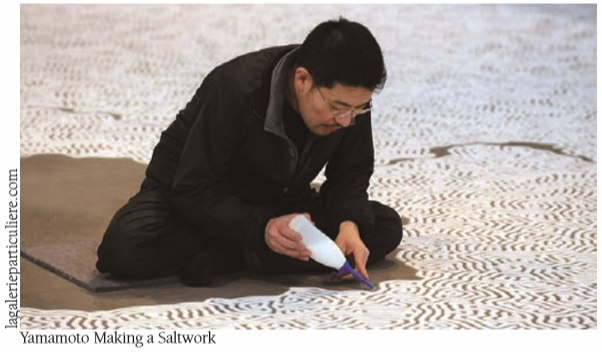
Motoi Yamamoto, a Japanese installation artist, uses salt as the only material to create astonishing two-dimensional artworks such as seas, broken planets, storms, and mountain ranges. He started to make his works by associating memories of his sister with salt after she died at the early age of 24 because of brain cancer, in 1994. As salt has traditionally been used in funerals in Japan, works of Yamamoto are highly related to the memory of his sister. He initially started with making a brain sculpture with salt to express her disease but decided to make two-dimensional salt art with a thought of how it would look like if the salt was spread on the ground. Most of his art works resemble a maze; all of them trace back to his memories of his sister from the beginning to the end.
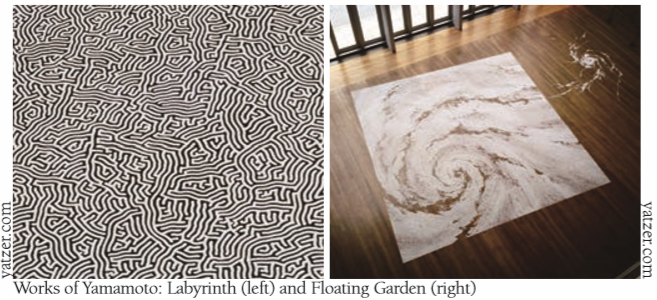
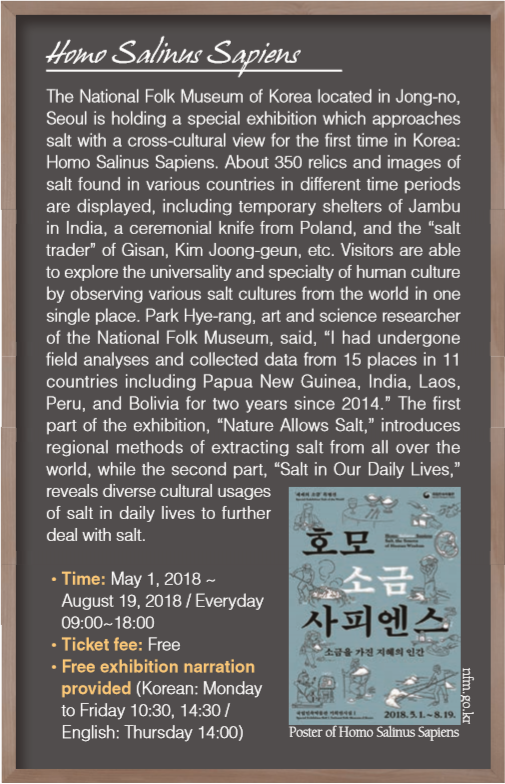
Since salt is inseparable from sustaining life, mankind will barely survive on Earth without it; its value is beyond expression. Sometimes, however, people tend to forget the preciousness of important things when those things become familiar, just like with salt. Therefore, the SKT hopes Kingos could be refreshed of the importance of salt and its usage in society through this article.
